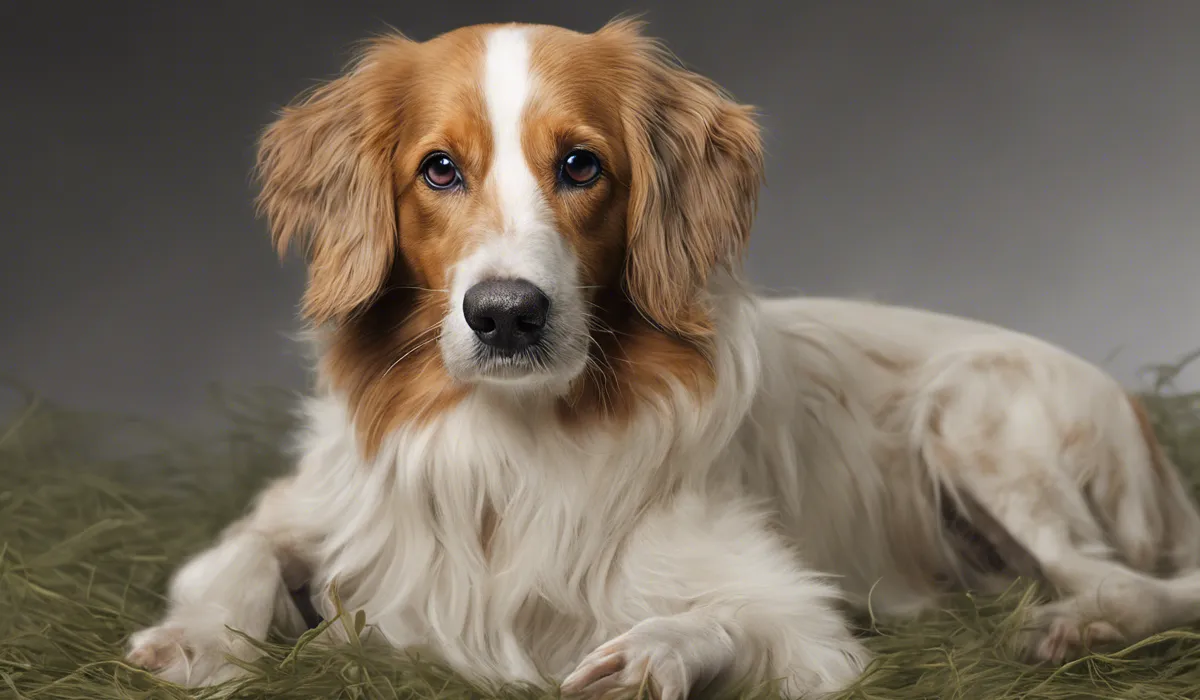Yes, mold can affect dogs, potentially causing respiratory problems, allergic reactions, and toxicity if ingested. Symptoms in dogs include coughing, wheezing, and nasal discharge. Immediate veterinary care is advised if mold exposure is suspected.
Understanding Mold and Its Impact on Canine Health

What is Mold?
Mold is a type of fungus that can grow both indoors and outdoors. It spreads by releasing tiny, lightweight spores that travel through the air.
Molds come in various types, such as Aspergillus, Cladosporium, and the infamous black mold, Stachybotrys chartarum.
These organisms break down and consume organic material, making them an important part of our ecosystem. However, when mold grows unchecked, especially indoors, it can cause problems for both humans and animals.
Where Does Mold Grow?
Mold loves moist, warm, and dimly lit areas. It commonly thrives in places like basements, bathrooms, and anywhere there has been water damage or leaks.
Outdoors, mold can be found in soil, compost piles, and on decaying plants. These environments are ideal breeding grounds for mold to thrive and multiply.
Exposure to Mold in Dogs
Dogs can come into contact with mold in several ways. They may inhale mold spores from the air, ingest mold by licking contaminated surfaces, or have direct skin contact when walking through mold-infested areas.
Because dogs often explore their environment with their noses, they are at a higher risk of inhaling or ingesting mold than humans.
Signs of Mold Exposure in Dogs
If a dog has been exposed to mold, symptoms can vary but often include respiratory issues like coughing, wheezing, and nasal discharge. Some dogs may show signs of allergies, such as itching, redness of the skin, or ear infections.
In severe cases, ingestion of toxic mold can lead to symptoms like vomiting, diarrhea, and even seizures.
Chronic Effects on Canine Health
Continuous exposure to mold can have long-term effects on a dog’s health. Chronic respiratory conditions, ongoing allergic reactions, and immune system suppression are possible outcomes.
In severe cases where toxic molds are involved, long-term exposure can lead to serious health issues and even be life-threatening.
Diagnosing and Treating Mold Exposure in Dogs

Detecting Mold Exposure Symptoms
As a pet owner, it’s vital to recognize the signs of mold exposure in your dog. Watch for any unusual respiratory symptoms, allergic reactions, or gastrointestinal problems.
A change in your dog’s behavior, such as lethargy or a decrease in appetite, can also be a sign that something is wrong.
When to See the Vet
If you suspect your dog has been exposed to mold, it’s important to take them to the vet as soon as possible. Early intervention can prevent more serious health issues and ensure a better outcome for your pet’s recovery.
Diagnostic Tests for Mold Exposure
Your vet may perform various tests, such as blood work, urinalysis, and imaging like x-rays or CT scans, to determine if mold is affecting your dog’s health.
In some cases, they may also recommend specific tests for detecting mold in your dog’s system.
Mold-Related Illness Treatments
Treatment for mold exposure in dogs can vary depending on the severity of the symptoms. It may include medications to manage allergies and respiratory problems, antifungal treatments, and supportive care such as fluids and rest.
If the exposure to mold is due to a contaminated environment, it’s crucial to remove the dog from that environment to prevent further exposure.
Recovery and Prognosis
With prompt and proper treatment, many dogs recover well from mold exposure. The prognosis depends on the severity of the exposure, the type of mold, and how quickly treatment is started.
Your vet will provide guidance on what to expect during your dog’s recovery period.
Preventing Mold Exposure in Your Home

Mold Prevention Strategies
Preventing mold growth in your home is key to protecting your family and pets. Keep your home dry by fixing leaks promptly, using dehumidifiers in damp areas, and ensuring good airflow throughout your living spaces.
Safe Mold Cleaning Methods
When cleaning up mold, it’s important to use safe methods that won’t harm your pets. Use mild, pet-safe cleaning products and avoid harsh chemicals.
Protective gear, such as gloves and masks, can protect you from inhaling spores during the cleaning process.
Proper Ventilation and Humidity Control
Keeping your home well-ventilated and controlling the humidity levels can significantly reduce the risk of mold growth.
Use exhaust fans in bathrooms and kitchens, and consider using a hygrometer to monitor the humidity levels in your home.
Choosing Pet-Safe Mold Removers
When selecting mold removal products, always choose options that are safe for pets. Look for natural or non-toxic solutions that effectively remove mold without putting your dog’s health at risk.
Regular Home Maintenance
Regularly inspect your home for signs of mold and address any issues immediately. Keep gutters clean, ensure downspouts direct water away from your home, and check for condensation or moisture buildup in attics and crawl spaces.
FAQs About Mold Effects on Dogs
Can mold exposure cause respiratory issues in dogs?
Yes, mold exposure can lead to respiratory problems in dogs, such as coughing, wheezing, and difficulty breathing.
What are the signs of an allergic reaction to mold in dogs?
Signs of an allergic reaction to mold in dogs include itching, skin rashes, sneezing, nasal discharge, and red or watery eyes.
Is mold toxicity a risk for dogs if they ingest it?
Yes, ingesting mold can lead to toxicity in dogs, causing symptoms such as vomiting, diarrhea, muscle tremors, and seizures.
What should I do if I suspect my dog has been exposed to mold?
If you suspect your dog has been exposed to mold, you should seek immediate veterinary care to address any health issues.
Can long-term exposure to mold have chronic effects on a dog’s health?
Long-term exposure to mold can potentially lead to chronic respiratory issues and a weakened immune system in dogs.
Final Thoughts
Mold poses a significant health risk to dogs, potentially leading to respiratory issues, allergic reactions, and toxicity. Key symptoms to watch for include coughing, wheezing, and a runny nose.
Dog owners should seek veterinary assistance promptly if they suspect their pet has been exposed to mold.
